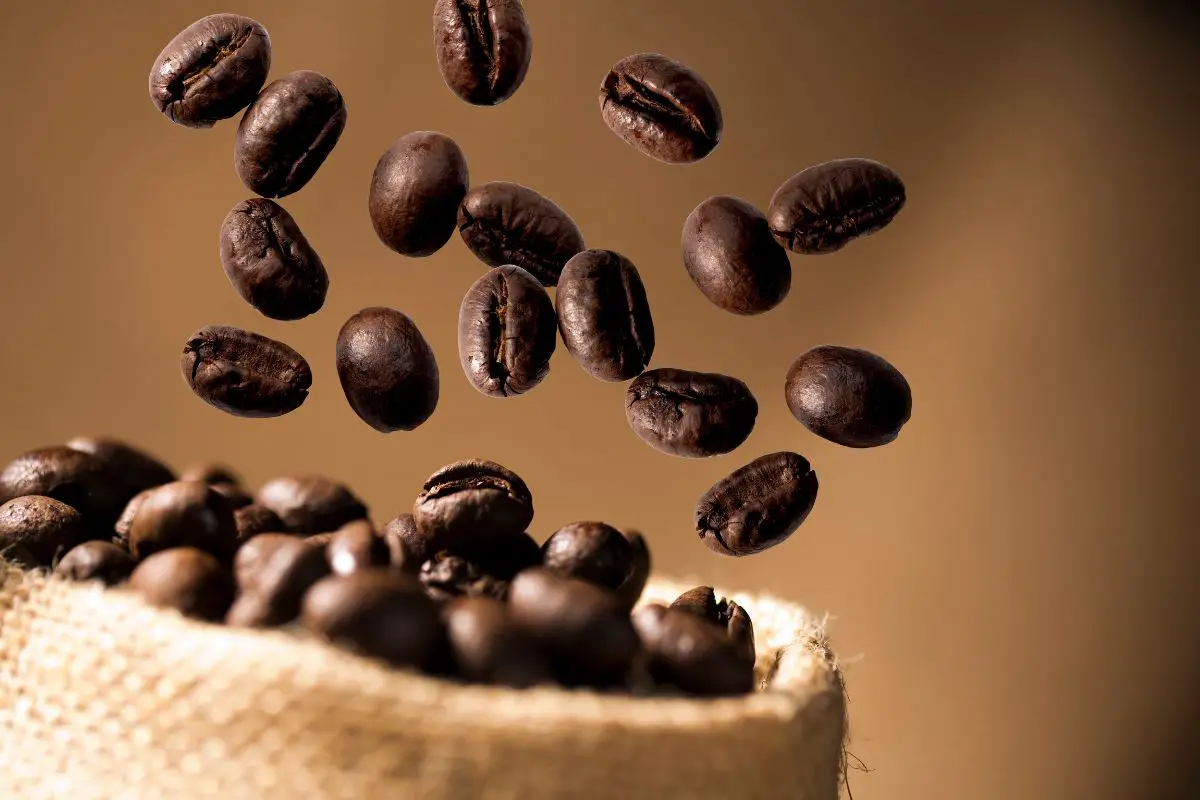Coffee beans are the bean-like seeds of coffee fruits that some people call coffee cherries. These seeds are harvested and processed to make coffee grounds that transform into a delicious cup. However, coffee beans can also be eaten on their own. This behaviour is a practice that has been going on for many years among people.

Why do people eat coffee beans? Is eating coffee beans beneficial or detrimental to the body in any way? Does it contain caffeine? These are the answers this article shall be providing.
Coffee Beans
A part of a coffee tree consists of the plant and the seed. The plant can be categorised as a tree since it can grow to about 9 meters long. But farmers cut it short on the farm so it can be easy to harvest. So, when you enter a coffee farm, you will think the coffee plant is just a bush.
The coffee plant consists of Branches, Leaves, flowers, cherries and seeds.
After about three to four years of having primary, secondary, and tertiary horizontal branches, small, delicate white flowers grow at the leaves and branches meeting point. Green cherry-like fruits appear on the flower areas after about six to eight weeks. The cherries change colours and taste from sour to sweet as they grow older.
Each cherry has two tiny peanut-like seeds unless there’s a case of Peaberry. These seeds are the coffee beans that go through a lot of processes for you to get that delicious daily dosage of caffeine.
Types of Coffee Beans
Coffee plants have over a hundred species with different growing methods, caffeine levels and tastes. The most common types of coffee beans include;
- Arabica
- Robusta
- Liberica
Arabica Coffee Beans
Arabica beans are the most popular of all coffee beans and are considered to be of the best quality. These beans take over 60% of coffee beans produced in the world.
Arabica beans are known to have special needs such as a high-altitude environment to grow, plenty of shade and steady rainfall. However, they are delicate to deal with and can be affected by environmental inconvenience.
The beans are well known for their distinct flavour and aroma, among other coffee beans.
Robusta Coffee Beans
The second most popular coffee bean is Robusta. As the name implies, the beans are hardy and have strong immunity against plant diseases.
Robusta coffee beans have a smooth texture and a slightly chocolatey taste, making them go well with sugar and milk.
These beans have twice the amount of caffeine in Arabica and give a more robust flavour.
Liberica Coffee Beans
Liberica beans are scarce to come by. They are highly smoky, floral and fruity with a unique aroma.
Liberian beans have an irregular shape compared to other coffee beans. They are also more significant than the rest.
Excelsa Coffee Beans
Excelsa coffee beans are productive and resilient beans that require extensive care to get the best of them. The leaves and flowers are often leathery and large.
These beans grow best in vertical space and altitudes between 1000 and 1,300 m.a.s.l.
Eating Coffee Beans Benefit
People have been eating coffee beans for more than a hundred years. It possesses almost the same benefits as sipping the drink.
These benefits are;
More Concentrated Caffeine
A typical cup of coffee has undergone a lot of processes, such as diluting with water and filtering before being poured into a mug or cup. But a coffee bean is still raw and full of unfiltered caffeine.
By implication, the body absorbs more caffeine from coffee beans than from coffee.
Health Benefits
Eating coffee beans has been linked to all other health benefits, such as the reduced risk of depression, Alzheimer’s disease, Parkinson’s disease, heart disease and stroke, liver diseases, and type 2 diabetes and regulates blood sugar levels.
Source of Antioxidants
Just as coffee drinks are a source of antioxidants, coffee beans do the same. These antioxidants help with combating a lot of diseases.
Side Effects of Eating Coffee Beans
Depending on body sensitivity and health issues, eating coffee beans may have;
- Laxative effect
- Heartburn and stomach upset
- Loss of sleep
- Increased anxiety symptoms
- Caffeine withdrawal symptoms
Difference Between Eating Coffee Beans and Drinking Coffee
Just as we drink coffee, people eat coffee beans raw.
Coffee beans and coffee drinks provide the same nutrients, but those in coffee beans are more concentrated.
Choosing coffee beans over drinking coffee may lead to higher absorption of caffeine because a regular cup of coffee has gone through many processes, including filtering and dilution.
However, roasted coffee beans are a better option than unroasted coffee because they are raw, extremely bitter beans with a woody flavour. They are also not easy to chew; roasted coffee beans are softer.
Whichever one you choose should, however, be taken in moderation.
FAQs
Is Chewing Coffee Beans Bad for your Teeth?
The good news for coffee bean eaters, eating coffee beans has a lot of health benefits that include fighting bacteria that cause tooth decay.
Can you Eat Raw Roffee Beans?
Raw green coffee beans are highly bitter, but some people enjoy the bitter flavour.
How Many Coffee Beans are Safe to Eat?
As long as you are not sensitive to caffeine effects or among those that should abstain from caffeine (such as pregnant women), you can eat about 20-30 coffee beans in a day.
Can I Eat Coffee Beans for Weight Loss?
The caffeine in coffee has been proven to improve metabolism and endurance during workouts and may increase the rate of fat burning. However, it should be in moderation.
Final Words
Coffee beans are as safe as coffee drinks to consume. Coffee beans have a lot of health benefits, such as antioxidants, energy boosters and prevention of some diseases.
However, it should be taken in moderation to avoid unpleasant effects such as caffeine withdrawal symptoms, increased anxiety and many more.
Related articles: